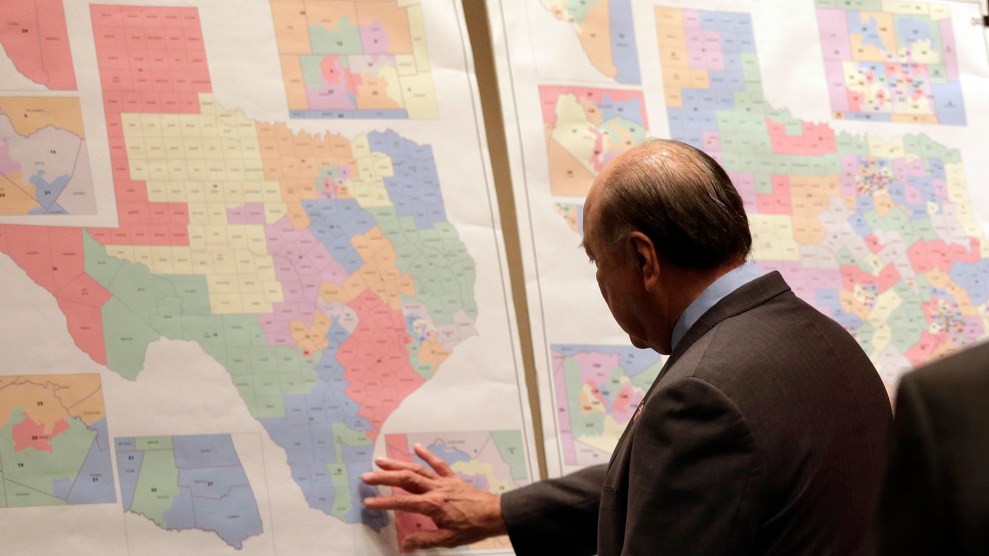
Texas state Sen. Juan "Chuy" Hinojosa looks at maps on display prior to a Senate redistricting committee hearing in 2013. Eric Gay/AP
The state of Texas is on an impressive losing streak in court. On Thursday evening, a three-judge panel of a federal district court in San Antonio found that the state House district map purposefully undercut the voting power of African American and Latino voters—the ninth racial discrimination case the state has lost since 2011 and the fourth in just over a week.
The ruling comes nine days after the same court found that another Texas district map, for its representatives in Congress, discriminated against minorities and ordered the state to redraw two districts. But rather than redraw the congressional and state House maps, Texas is appealing to the US Supreme Court to preserve them.
The ruling Thursday evening was the latest episode in a six-year battle over political maps drawn in 2011. In 2013, with the maps tied up in court, the state Legislature adopted new congressional and state House maps based on the 2011 maps; those maps have been in place ever since. The San Antonio court struck down both the 2011 maps and the 2013 congressional map this year as intentionally discriminatory. On Thursday, the court found that the Republican-dominated Legislature “purposefully maintained the intentional discrimination” from the 2011 map in drawing four state House districts.
While Texas appeals the rulings, the parties are due back in court in early September to begin to redraw the maps ahead of the 2018 elections. New maps would likely reduce the size of the Republican majority in the state Legislature and Texas’ congressional delegation.
But the bigger question looming over Texas is whether, after the state racked up nine findings of discrimination in six years, courts will decide to place Texas once again under federal supervision, forcing all changes to election laws to be pre-approved by the federal government. Texas and eight other states with a history of discrimination, in addition to a number of cities and counties, were subject to “preclearance” under the 1965 Voting Rights Act until 2013, when the Supreme Court gutted the law. But the Supreme Court did not remove the ability of federal courts to place jurisdictions back under federal oversight if there is a finding of intentional discrimination. In Texas, there are nine.
















